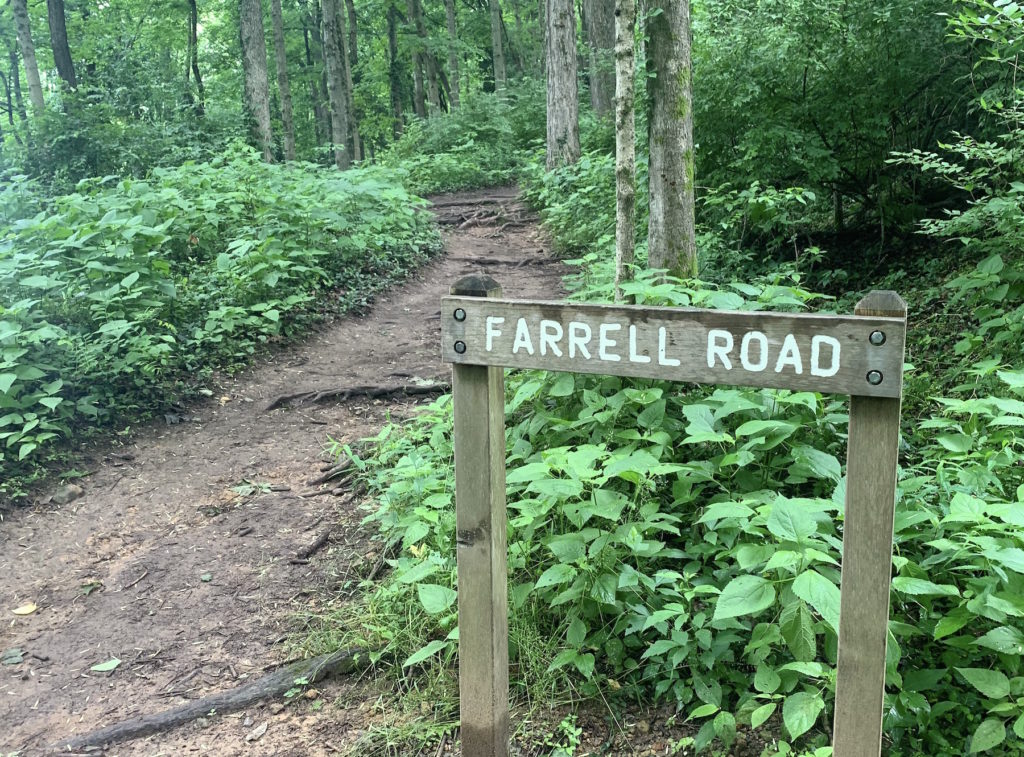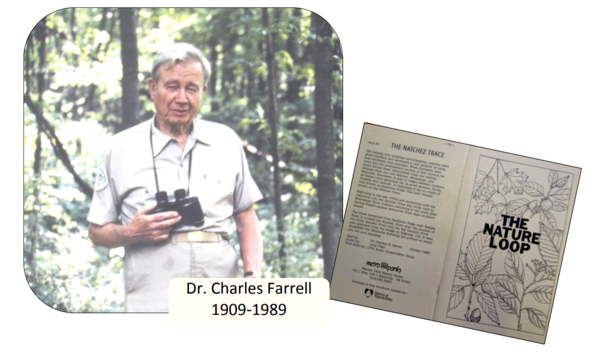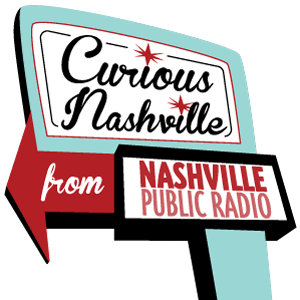
When hiking along one of the trails in Percy Warner Park, visitors may come across a wooden, waist-high sign that reads “Farrell Road.” It stands right next to the wide dirt path widely known as the Warner Woods Trail.
It appears to be anything but a road.
Karen Cronin, who frequently hikes this trail with her family, has often wondered about the sign and wrote to Curious Nashville to ask:
“What is the story behind the ‘Farrell Road’ sign on the trail at Percy Warner Park?”
She’s not the only one who has noticed.
A quick internet search shows that some parkgoers have taken note. In particular, photos of it often appear on popular hiking websites. Regardless, few seem to have knowledge of its history, although it doesn’t date back all that far.
The truth is that the purpose of the sign is to commemorate an important Nashvillian — not to mark a literal roadway.
The Farrell Road sign honors Dr. Charles Farrell, a zoologist who began working at the Warner Park Nature Center in 1977, according to Vera Roberts, the center’s current director.
Farrell worked as a professor at Vanderbilt University for over 20 years, teaching courses on biology, evolution and zoology before he retired and began his work at the nature center.
One of Farrell’s most special attributes was his particular, intricate knowledge of unique topics such as chiggers and vultures. His expertise was noted often by The Tennesseean, and his work was even published by the Smithsonian Institution in 1956.
While there’s no explicit explanation about the sign on the trail, Farrell’s role and significance to the park was documented in a report that’s now kept at the nature center.
Farrell played a huge role in developing the center by training employees, improving management strategies, and increasing the number of environmental education programs. He was also fond of leading guided field trips through the park and educating kids and adults alike on nature and the environment.
He also wrote an earlier version of The Nature Loop guide for the park:

In the 1980s, the nature center named an area of the Warner Woods Trail “Farrell Road” to commemorate Farrell’s achievements, says Jackie Jones, spokeswoman for Metro Parks.
This area does include an old, unpaved road full of trees and hills. Though that road’s origins are unknown, Jones suggests that it may have existed before the creation of Percy Warner Park, or in its early days between 1927 and 1941.
Though the “Farrell Road” sign may not lead to a road at all, it marks an important history. Its true purpose is not to mark a route, but to commemorate a man who helped make Percy Warner Park the place of nature and education that it is today.


